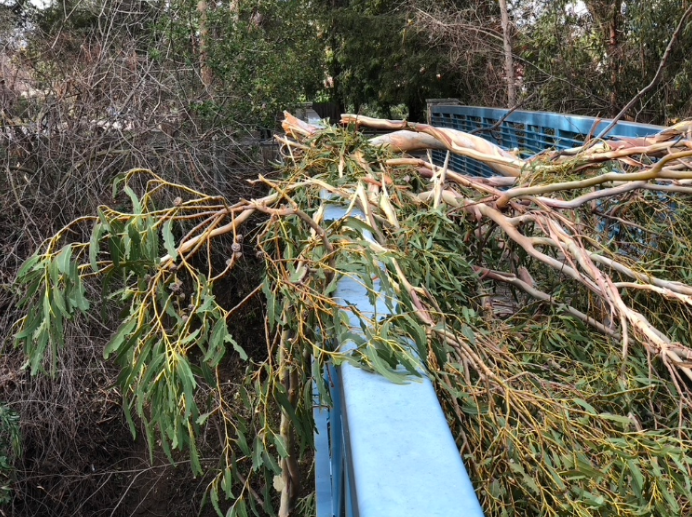Downpour demolition
Examining the recent storms in Cupertino and their effect on the community
A fallen tree blocks a bridge in Shoreline at Mountain View.
February 1, 2023
A series of heavy storms battered California in the beginning of January, flooding cities, damaging infrastructure and forcing thousands of residents to evacuate. Cupertino was one of many cities hit by the atmospheric river, with some residents experiencing power outages as well as damage to property.
According to Cupertino Emergency Manager Thomas Chin, Cupertino typically experiences one of these storms during December or January every year. The recent weather was unique because several atmospheric rivers hit back-to-back starting in late December.
“The series of atmospheric rivers and Pineapple Expresses is what caused the impacts that we saw region-wide,” Chin said. “It’s unusual. We haven’t seen this in a number of years.”
Response to the weather
Cupertino’s response began with preventative maintenance, which Chin says was crucial to mitigating the effects of the weather. As soon as the city knew about the storm, Public Works Staff were sent to inspect hotspots such as creeks and river beds, clearing clogged drains and debris ahead of time.
Volunteer Block Leaders and Citizen Corps helped alert residents to the atmospheric rivers by providing tips on preparing for and handling the weather. For instance, Cupertino residents could obtain up to 15 pre-filled sandbags for free outside the Service Center, allowing residents living near creeks or other bodies of water to protect their homes from flooding.
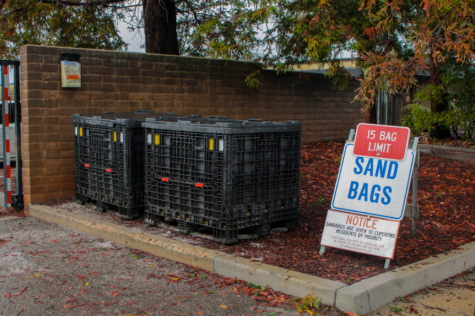
“We saw how our network of volunteers can really reach our community on a personal level, with people that they know coming to them with information about how to be prepared to help mitigate storm damage,” Chin said.
As the atmospheric rivers came in, City Councilmember Liang Chao says Santa Clara County provided amenities for residents who might not have had access to essentials, such as charging stations and warming centers. Emergency services such as the Fire Department were also available to help clean up areas affected by the atmospheric rivers.
“If anyone is stuck [or] if their water is too high, [the Fire Department] helps evacuate some of the homeless camps to higher ground,” Chao said. “[Also], because of the storms, some of the branches fell down and [blocked] rivers. They go and help clean those up too.”
Chin says Cupertino 311, an online portal and app that allows residents to report infrastructure damages to the City Staff, helped staff members respond to instances of fallen trees and stormwater ponding as quickly as possible.

“The measures that our field crews conducted were incredibly effective, not only the preventative work done, but the rapid response and the dedication our Public Works staff have to the community,” Chin said. “Those measures were incredibly effective to respond to and mitigate some of the potential damage that could have occurred.”
Impacts on Cupertino
Like other residents, history teacher Usiel Meraz-Cerna dealt with the storm by driving slower, watching for potholes and only walking his dog, Pánfilo, during breaks in the rain. The worst occurred on the night of Jan. 10, when he found his driveway piled with branches from the redwood trees near his home. One branch had fallen at an angle against his garage, punching through two panels.
“None of our other neighbors had any major damage,” Meraz-Cerna said. “You could see parts of the wall loose here and there, but nothing else that was damaged. We have a pool on our property and it’s just full of tree branches and debris. We were the only ones who had a garage busted through.”
Similar to Meraz-Cerna, Cupertino Councilmember Liang Chao noticed no severe damage incurred from nearby destruction due to the storms.
“In my home two trees fell, [but] fortunately they fell into the backyard of my neighbor and didn’t hurt any people,” Chao said. “[Part of] the fence actually broke.”
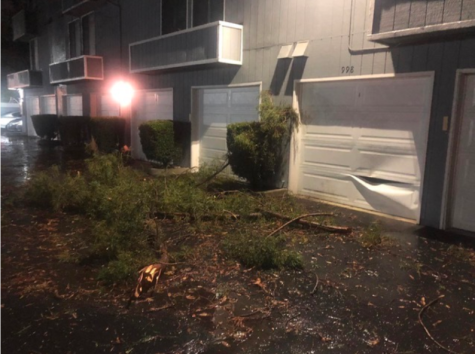
Photo courtesy of Usiel Meraz-Cerna | Used with permission
Though Cupertino experienced a few “minor instances of flooding,” Chin says downed trees and stormwater ponding were the most common problems City Staff faced because of the weather. Chao adds that power outages were a frequent complaint from residents, although she did not experience any herself.
Initially, Meraz-Cerna considered using sandbags or tarps to prepare for the weather, but he and his wife ultimately took few precautions other than moving their plants indoors.
“We were just crossing our fingers, hoping nothing happens and we survive another storm,” Meraz-Cerna said. “It was towards the end of the big storms and we were OK; there wasn’t any flooding [near] our place. Where we live, it’s not really a floodplain, it’s a little bit elevated. So we were lucky with that.”
To prepare for the possibility of such damages, Chao encourages residents to check the trees and branches around their homes before storms. Prior to the atmospheric river, Chin secured his patio furniture and equipment, checked low-lying areas and ensured the surrounding streets were free of debris to prevent water buildup.
“These are all measures that every resident should take to prepare their home for upcoming storms,” Chin said.

Future measures
Going forward, Chin believes the City of Cupertino can build upon the already strong infrastructure and disaster management system by adapting and building upon issues that arise in the community. He anticipates the necessity of improving upon the system by looking long term into the future and learning how the City can maintain its high standards of planning for events such as flooding or power outages.
“The infrastructure has been built and planned to meet the needs of our current [status of] the city as well as to anticipate the needs for the future,” Chin said. “So we have a really robust capital improvement plan that is planning for the future, not just for today. I think that our infrastructure is a model for other jurisdictions as well — something that city residents can be proud of.”
Chao says one possible area for improvement is the power grid. She suggests collecting data on where power outages have occurred to determine the root cause and update the infrastructure in that area.
“Weather conditions will always happen,” Chao said. “We just need to learn to adjust. [For example], I see people who proactively clean out the drains around their home. [If] everyone [does] that, then there will be less clogging.”
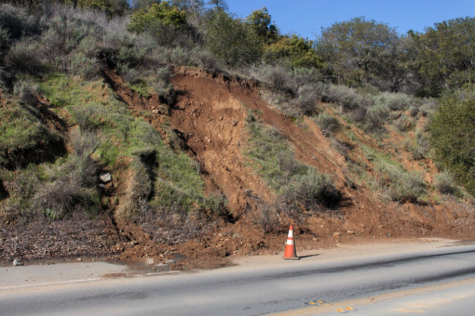
In terms of other methods of improvement, Chin believes that the Cupertino 311 platform could improve its outreach to a more widespread audience for issues that may arise in the community.
“We are constantly looking at ways that we can streamline processes and make things more efficient,” Chin said. “But the most specific way is if we can get Cupertino 311 out to a wider net of the community, so that more people are aware of that [option] to report things during storms or on a regular day [if] they see infrastructure problems.”
In general, the large amount of water accumulated in Cupertino as a result of the floods and storms was highly unusual, given that the region has not experienced such an event in a very long time. Chin believes the impact of these occurrences are drastically different because California has been in a drought for a significant amount of time.
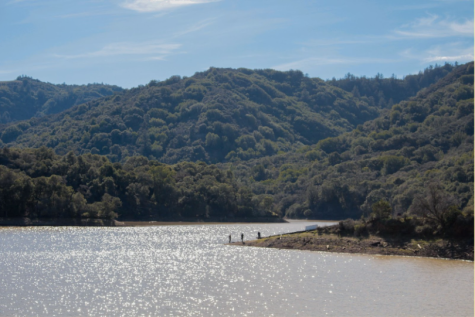
Although the weather refilled local reservoirs and percolation ponds and added to the Sierra Nevada snowpack, the New York Times writes that atmospheric rivers will likely be unable to offset the onset of droughts that return rapidly and persist longer, as a result of increasing variability in the climate. Extreme droughts will likely still dominate over the months or years of storms and floods in California.
“I think the [recent weather events] are natural. There will be a drought, then we’ll have a storm, [then a] drought and then a storm again,” Chao said. “[But] human beings have always been good at coming up with ways to [better] adapt to [changing] weather.”


